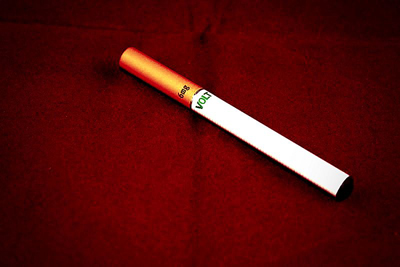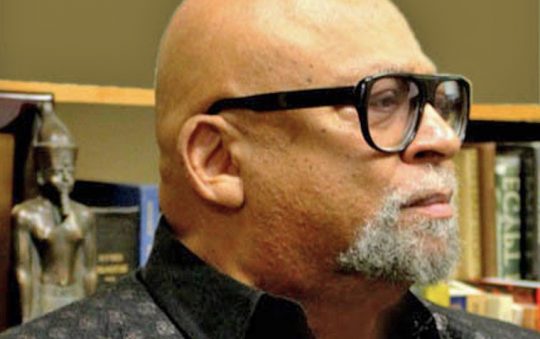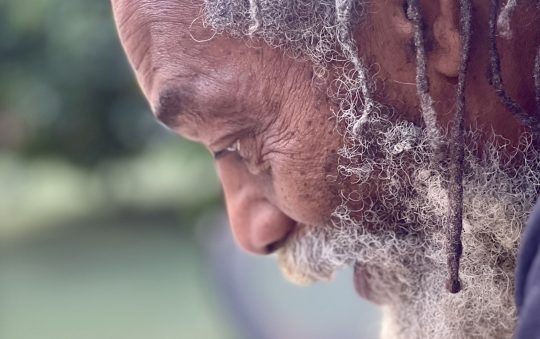
Electronic cigarette resembling a tobacco cigarette – The Los Angeles City Council moved to ban e- cigarette use, often called “vaping,” inside bars, nightclubs, restaurants and other public areas where tobacco smoking is restricted on Wednesday March 5. (photo courtesy of Wikimedia Commons)
The Los Angeles City Council moved on March 5, to ban e- cigarette use, often called “vaping,” inside bars, nightclubs, restaurants and other public areas where tobacco smoking is restricted. The council voted 14-0 to approve the ordinance prohibiting vaping at farmers’ markets, parks, recreational areas, beaches, indoor workplaces such as bars and nightclubs, outdoor dining areas and other places where lighting up is banned. Vaping lounges and stores will be exempted from the ban, similar to exceptions made for cigar and hookah lounges under tobacco smoking regulations.
E-cigarettes used for “theatrical purposes” will also be allowed. The prohibition still requires approval from the mayor. A motion by Councilman Joe Buscaino that would have allowed consideration of an exemption for bars failed on a 8-6 vote.
Buscaino, in pushing for the amendment, argued that while he supported keeping e-cigarettes out of the hands of minors, the ban at bars would tread on the rights of adults to use e-cigarettes.
“Although e-cigarettes look like cigarettes, they are not tobacco, and I don’t think they should be regulated exactly the same way,” he said, adding, “I’ve heard from so many people … that they’ve stopped smoking because of e- cigarettes.”
The battery-powered devices, which have been marketed as smoking- cessation aids, enable users to inhale a nicotine-laced vapor. Some city and public health officials say not enough is known about the effects of chemicals contained in the liquids. Supporters of the regulation point to studies indicating that chemicals considered harmful by the Food and Drug Administration — such as nickel, lead and chromium — have been detected in e-cigarettes.
“Safer does not mean safe,” Dr. Jonathan Fielding, the county’s public health director, told the council. “Although they are less harmful than traditional cigarettes, some e-cigarettes contains some health risks.”
Fielding added that e-cigarette sales have grown into a “$1.5 billion industry that has caught the attention of big tobacco, which historically has had scant regard for public health.”
Councilman Paul Koretz, who proposed the ban with Councilman Mitch O’Farrell and with support from Councilman Bernard Parks, said e-cigarettes, which are flavored in bubble gum, fruit and other similar flavors, are being marketed to youth.
“I am most concerned about kids,” Koretz said. “We all know this is being marketed to kids, getting some kids who don’t smoke tobacco to start.”
The passage of the ban followed a lengthy debate, with several council members questioning everything from the science behind the health effects of e- cigarettes to the rights of adults to use a device that is potentially harmful but legal. Councilman Bob Blumenfield, part of a minority group of six members who voted to consider Buscaino’s amendment to exempt bars from the ban’s reach, asked how the effects of ultra-fine particles, carcinogens and other toxins found in some e-cigarettes compare to those found in “common, everyday” sources such as laser printers, coffee, frying bacon and camp fires. USC professor Lourdes Baezconde-Garbanati, serving on a panel of experts supporting the ban, responded that it was the combination of unregulated chemicals in e-cigarettes that raises concern that they may be dangerous.
The contents of individual e-cigarettes can also “vary wildly,” she said. The Food and Drug Administration is studying the devices, but regulation by the agency could “take years to do,” while the council can take action today, Baezconde-Garbanati said.
Councilman Paul Krekorian, who also voted to consider exempting bars from the vaping ban, said the City Council is not equipped to weigh in on the safety of e-cigarettes and that it would be better to leave the decision to an agency like county health or the FDA that employ staff able to scientifically evaluate the devices. Councilmen Mitchell Englander, Felipe Fuentes and Curren Price Jr. also voted to consider the bar exemption. Both supporters and critics of the wider ban that was ultimately passed agreed that studies on e-cigarette vapor is minimal, compared with what is available for tobacco smoke.
For Buscaino, the lack of “conclusive evidence that secondhand vapor from e-cigarettes is harmful” means that the council should not “be in any hurry to put so many restrictions on where and how adults — again, adults — can use a legal product.”
Councilwoman Nury Martinez, meanwhile, said it was better to err on the side of caution.
“If this device turns out to be safe, then we can always undo ordinances,” she said. “But if the device proves not to be safe, we cannot undo the harm that this would create on public health.”
Council President Herb Wesson made a plea to move forward with the wider ban, recalling the debate surrounding the dangers of tobacco smoking. When he started smoking, Wesson said, “there was no damn warning,” and even when it was a “known fact that cigarettes cause problems, there was no warning.”
After a warning was finally placed on cigarette packages, “even then, because of the lobby in Washington, no one actually could tell the truth,” Wesson said.






